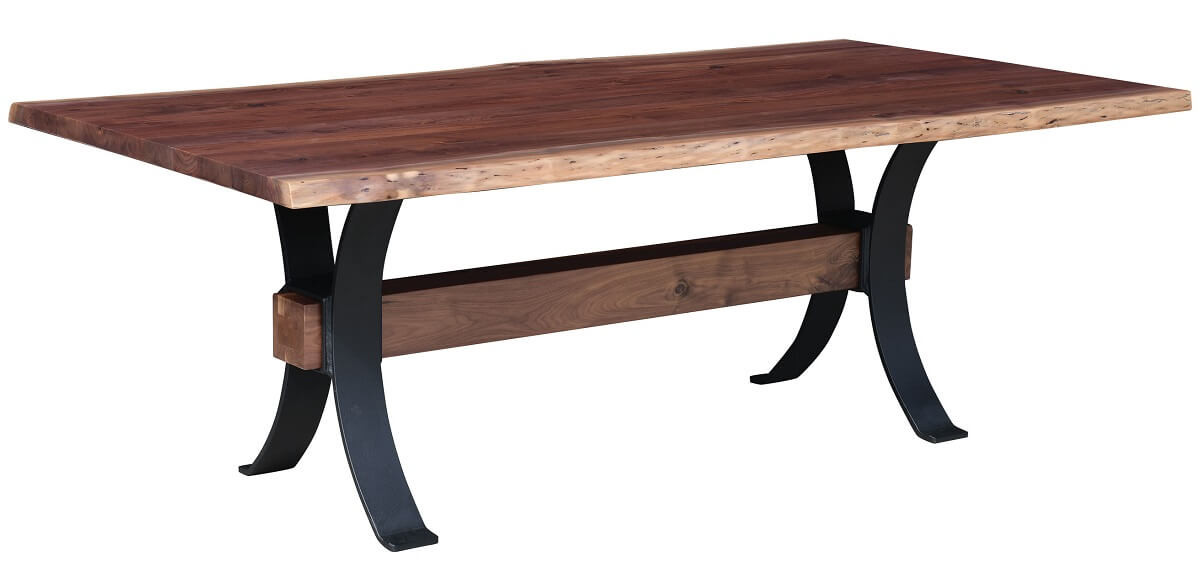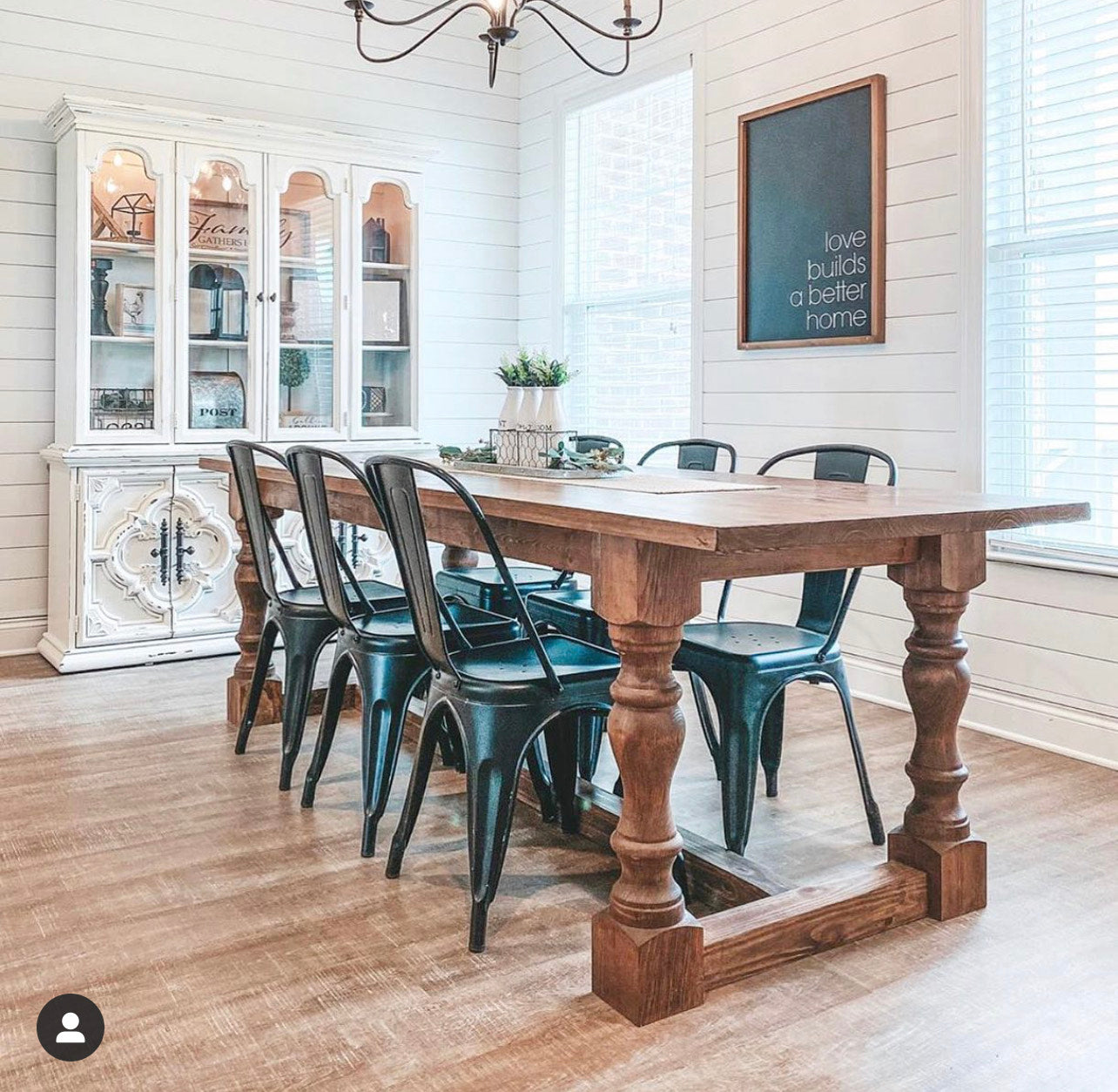How to Choose the Perfect Dining Room Table Legs for Your Home
How to Choose the Perfect Dining Room Table Legs for Your Home
Blog Article
From Typical to Modern: Find the Suitable Eating Space Table Legs for Your Design
While traditional layouts such as cabriole and turned legs evoke a feeling of classic sophistication, modern designs like hairpin and geometric choices offer a possibility for striking aesthetic passion. As you think about these aspects, the concern remains: how can you effortlessly incorporate these varied leg designs to create a harmonious eating experience?
Comprehending Table Leg Styles
The variety of dining room table leg styles can considerably influence both the visual appeals and performance of the area. Each leg style contributes unique visual elements and useful features, dealing with varied style preferences and usage demands. Comprehending these styles is important for selecting the appropriate dining table that lines up with your overall interior decoration vision.
For instance, tapered legs provide a clean, timeless appearance that can improve a room's beauty, while pedestal bases provide security and make best use of legroom, making them ideal for smaller sized spaces. Hairpin legs, a hallmark of mid-century modern-day style, introduce an industrial style, permitting a ventilated, open feel. Similarly, trestle legs evoke rustic appeal, providing durable support and a feeling of timelessness.
In addition, the option of materials plays a substantial role. Wooden legs can bring heat and structure, whereas steel choices frequently communicate a sleek, modern ambiance. Eventually, recognizing table leg styles is important for developing a natural dining area that reflects individual style while making certain functionality and convenience. By attentively thinking about these elements, you can improve both the aesthetic and functional charm of your eating space.
Typical Table Leg Options
When selecting eating area table legs, traditional options commonly embody timeless beauty and workmanship. These layouts show an abundant heritage and a dedication to quality, making them optimal for those that appreciate traditional appearances.
One of the most iconic conventional leg designs is the cabriole leg, identified by its elegant bent form. This style usually includes attractive makings and is most generally found in Queen Anne and Chippendale furnishings. An additional preferred alternative is the transformed leg, which boasts a collection of smooth, rounded forms that give a timeless appearance while preserving security.
Moreover, the straight leg, while basic, uses a unadorned and sturdy structure that can mix flawlessly with a range of tabletop designs. For those attracted to ornate outlining, claw-and-ball feet legs evoke a sense of grandeur and can act as a magnificent prime focus in any type of dining space.
Lastly, pedestal bases, although not purely legs, supply an alternate conventional alternative that permits ample legroom and can be beautifully sculpted. Each of these conventional leg styles adds to the total atmosphere of a dining room, marrying feature with aesthetic charm.

Modern Table Leg Layouts
Modern table leg styles offer a varied range of designs that emphasize ingenious materials and clean lines. These layouts typically focus on performance while functioning as striking prime focus within a dining area. Minimal looks are prevalent, with legs crafted from products such as steel, glass, and crafted timber, which contribute to a ventilated and contemporary feel.
One preferred design is the barrette leg, identified by its slim, tapered framework that gives stability without frustrating the table top (dining room table legs). This design is often discovered in mid-century modern-day furniture and can effortlessly complement numerous dining table shapes. One more fad is using geometric shapes, where legs might tackle angular or asymmetrical kinds, including visual rate of interest and a touch of virtuosity

Blending Designs for Unique Areas
Frequently, property owners seek to create unique eating rooms that reflect their individual style by blending numerous layout aspects. This method permits the incorporation of varied appearances, resulting in an unified yet unique environment. Coupling a rustic wood table with sleek, modern-day steel legs can produce an appealing contrast that raises the room's total appeal.
In addition, integrating vintage table legs with contemporary table tops can evoke a feeling of background while maintaining a modern-day sensibility. Such mixes not only display individual taste but likewise encourage imagination, allowing house owners to curate a space that really feels both individual and inviting.
Shade plays an important duty in this blending procedure; choosing table legs that enhance or contrast with the existing color design can enhance aesthetic interest. Whitewashed legs can soften the daring of a dark table surface, developing a well balanced visual.
Tips for Selecting the Right Legs
Selecting the right table legs is crucial for accomplishing both capability and visual appeal in your dining room. Begin by considering the general design of your area. Conventional setups gain from legs that feature complex makings try this or turned designs, while modern rooms may require streamlined, minimalist designs.
Next, examine the elevation and security of the legs. dining room table legs. Basic table vary in between 28 to 30 inches in elevation, so make he said certain the legs complement this measurement for comfort. Furthermore, robust products, such as wood or steel, can boost security and long life
Review the leg form as well-- options include straight, tapered, or pedestal designs. Straight legs supply a classic look, while tapered legs can include a touch of elegance. Pedestal bases provide ample legroom and are optimal for smaller sized areas.
Final Thought
In recap, choosing the optimal dining room table legs calls for cautious consideration of both contemporary and conventional designs. By balancing leg style, elevation, and material with the general decoration, a natural and inviting atmosphere can be accomplished.
The variety of eating space table leg styles can dramatically influence both the visual appeals and capability of the room. Eventually, understanding table leg styles is necessary for developing a natural eating location that shows individual style while making certain practicality and convenience.One of the most iconic typical leg styles is the cabriole leg, identified by its graceful rounded form. Straight legs provide a traditional appearance, while tapered legs can include a touch of style.In summary, picking the perfect eating room table legs needs mindful factor to consider of both modern and standard designs.
Report this page